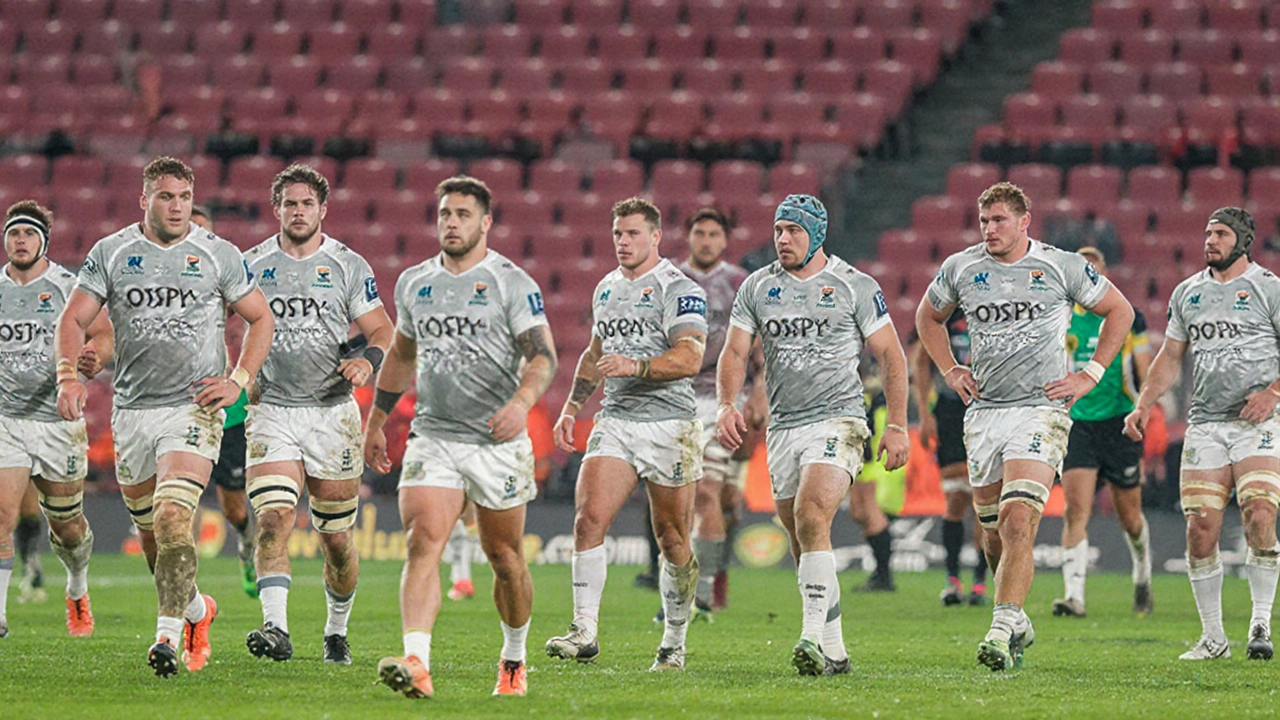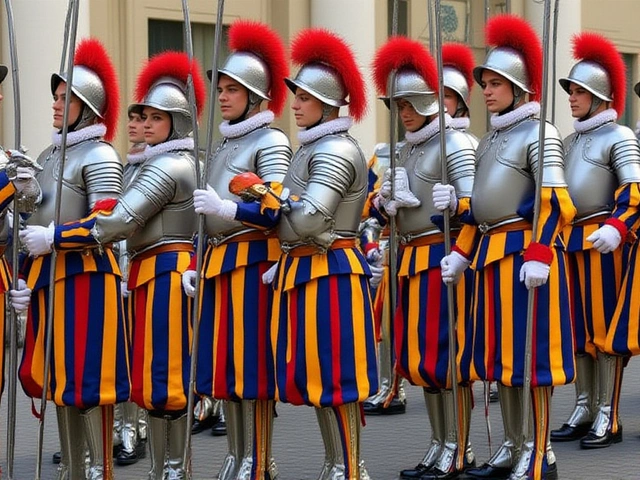Season outlook for the Ospreys
The new URC calendar rolls out in early September, pitting the Swansea‑based side against fourteen other franchises from Ireland, Scotland, South Africa, Italy and Wales. On paper the schedule looks familiar – double‑header fixtures, a mid‑season break and a playoff chase that runs into spring 2026 – but the context has shifted dramatically. After a 2024‑25 campaign that saw the Ospreys finish in the lower half of the table, the coaching staff are plotting a tighter, more aggressive style of play that leans heavily on the region’s home‑grown talent pool.
Head coach Simon Mann has spoken openly about the need to blend experience with youth. Players such as 22‑year‑old wing Dylan Evans and scrum‑half Rhys Morgan are expected to get more minutes, while veteran centre Ben Rowe will serve as a mentor on and off the field. The back‑row is set to feature a mix of seasoned enforcer Tom Jenkins and breakout star Luke Davies, whose ball‑carrying numbers in the development league have attracted attention from the senior squad.
Strategically, the Ospreys plan to tighten their defensive line, aiming to reduce the average points conceded per game, which hovered at 28 last season. Set‑piece efficiency, particularly at the lineout, will also be a focal point, with scrum‑coach Gareth Hughes introducing new calling systems to counter the physicality of South African teams. While data analysts predict a modest improvement in win‑percentage, the real test will be consistency against the league’s heavyweights – Leinster, the Bulls and Munster – all of which operate on considerably larger budgets.

Off‑field challenges and the wider Welsh picture
Beyond the tactical tweaks, the Ospreys are wrestling with a financial landscape that looks bleaker than any in the past decade. The Welsh Rugby Union’s latest budget report shows a 12% cut in regional funding, a move intended to rebalance the sport’s overall fiscal health but which has left the four regions scrambling for resources. Analysts note that this shortfall translates directly into reduced squad depth, limited overseas signings and a tighter salary cap that forces clubs to make hard choices about contract renewals.
The funding squeeze is hitting the Ospreys harder than some of their counterparts because their stadium, the Brewery Field, generates lower match‑day revenue compared to the newer, larger venues used by Cardiff and the Dragons. Ticket prices have only risen marginally, and corporate sponsorships have not kept pace with inflation, leaving the front office to explore alternative income streams such as community events and digital fan experiences.
These budget constraints are not an isolated problem; they echo across all four Welsh regions. The gap between Welsh clubs and the well‑financed Irish provinces is widening, as evidenced by the average player salary disparity – roughly £150,000 in Ireland versus £90,000 in Wales. This imbalance makes retaining top talent increasingly difficult, with promising youngsters often lured abroad after just a few seasons.
Compounding the monetary issues are lingering governance concerns. Recent boardroom reshuffles within the WRU have raised questions about long‑term strategic planning, especially regarding the viability of maintaining four professional regions. Some commentators argue that a merger of two regions could concentrate resources and create a more competitive Welsh representative in the URC.
For the Ospreys, the immediate priority is to keep the squad focused on the pitch while the administration negotiates the next round of funding. Community outreach programs, which have historically bolstered the club’s fan base, are being expanded to maintain grassroots engagement. Schools in Swansea and surrounding counties are slated for increased coaching clinics, a move that aims to nurture the next generation of Welsh talent and perhaps ease future recruitment costs.
Fans can still look forward to a full roster of home matches at the Brewery Field, with televised coverage slated on Welsh sports channels and streaming options available for overseas supporters. The anticipation builds around marquee fixtures – notably the early‑season clash with Leinster and the autumn showdown against the Bulls – games that will likely serve as litmus tests for the Ospreys’ new game plan.
In essence, the 2025‑26 URC season stands as a crossroads not only for the Ospreys but for Welsh professional rugby as a whole. With financial headwinds, structural debates and a competitive field that shows no sign of slowing, the region’s ability to adapt will dictate whether they merely survive the campaign or lay the groundwork for a more resilient future.







Abhay patil
Ospreys gotta hustle this year the budget’s tight but the young guns can make a splash they just need the right push from the veterans
Amber Brewer
From a strategic standpoint, leaning on local talent like Evans and Morgan is sensible; they bring energy and the club can save on costly overseas contracts while still staying competitive.
Kim Coulter
It’s a classic tale of a proud nation trying to keep its heritage alive, yet the glitter of Irish riches blinds many – the Ospreys must rally under their flag or fade into obscurity.
Michelle Toale-Burke
Oooo this feels like a rollercoaster for the fans 😭 but hey maybe the underdogs will bite back this season!
Amy Paradise
Exactly, the vibe is intense – those community events could actually turn the tide, especially if they keep the local crowd loud and proud.
Janette Cybulski
I hear the challenges loud and clear; let’s hope the coaching staff’s mentorship program lifts the squad morale and everyone stays focused on the field.
Mildred Alonzo
Do you think the lineout revamp will actually curb the South African physicality?
Elizabeth Bennett
While the financial constraints are real, the Ospreys have a chance to showcase Welsh resilience – a blend of tradition and innovation could set a new standard.
linda menuhin
Totally, but if they keep scrappin around while the big lads splurge, the gap just widens more.
Jeff Abbott
Honestly, the Ospreys are just a footnote in the URC now – without serious cash injection they’ll keep bleeding points to Leinster and Munster.
Quinton Merrill
Interesting take! I wonder if the community outreach could actually boost ticket sales enough to make a dent in that budget shortfall. 🤔
Linda Lawton
It’s no surprise the powers that be are cutting funds – they’re probably in cahoots with big corporate interests to keep the sport “pure” while lining their pockets.
Ashley Bradley
The Ospreys are walking a tightrope between ambition and austerity this season. Their coaching staff has doubled down on home‑grown talent, hoping that youth will offset the lack of big signings. By giving Dylan Evans and Rhys Morgan more minutes, they aim to inject pace and creativity into the backline. At the same time, veterans like Ben Rowe are tasked with mentoring the youngsters both on and off the field. The back‑row combination of Tom Jenkins and Luke Davies is expected to bring a blend of physicality and flair that could surprise opponents. Defensively, the team is focusing on tightening the line, which should bring down the 28 points‑against average from last year. Set‑piece work, especially lineouts, will see new calling systems introduced by Gareth Hughes to compete with the powerhouse South African provinces. Financially, the Ospreys are feeling the squeeze of a 12% cut in WRU funding, a blow that limits squad depth and overseas recruitment. Their stadium, the Brewery Field, generates less match‑day revenue than the newer venues used by Cardiff and the Dragons, compounding the fiscal pressure. Sponsorship deals have not kept up with inflation, pushing the front office to explore community events and digital fan experiences as alternative income streams. Across Wales, the salary gap between Irish provinces and Welsh regions is widening, making talent retention a serious challenge. Some analysts even suggest a merger of two Welsh regions could concentrate resources and create a more competitive side. The Ospreys, however, seem committed to staying independent and investing in grassroots programs to nurture future talent. Expanding coaching clinics in local schools could both grow the fan base and lower future recruitment costs. Ultimately, the success of the 2025‑26 campaign will hinge on how well the Ospreys adapt tactically while navigating the financial headwinds.
Joe Delaney
Sounds like a plan.
Ruben Vilas Boas
Exactly, stick to the basics and let the kids learn the ropes.
George Thomas
The financial pressure is undeniable, yet a disciplined approach to player development may serve the Ospreys better than short‑term spending.
Michelle Linscomb
We need to back the Ospreys full‑throttle; cutting corners now will only hurt the Welsh game later.
John McDonald
Absolutely! By leveraging community engagement platforms and digital sponsorship avenues, the Ospreys can create a diversified revenue model that mitigates the impact of the WRU budget cuts.
Jordyn Wade
From a broader perspective the Ospreys’ situation highlights a systemic issue within Welsh rugby – the distribution of resources seldom matches the competitive realities of the modern game. While the push for grassroots development is commendable and will likely pay dividends in the longer term, the immediacy of the financial shortfall cannot be ignored. The club must adopt a multi‑pronged strategy: first, enhance fan engagement through targeted digital content and interactive experiences that can attract younger demographics; second, pursue local corporate partnerships that align with community values, thereby creating sponsorship packages that are resilient to broader economic fluctuations; third, streamline operational costs without compromising player welfare, perhaps by sharing facilities or services with neighboring clubs where feasible. Investing in analytics and performance technology could also provide a competitive edge, allowing the Ospreys to maximize the impact of their existing talent pool. In doing so, they can demonstrate on‑field progress, which in turn fuels further commercial interest. Ultimately, a balanced approach that couples fiscal prudence with innovative outreach offers the best pathway for the Ospreys to not only survive but thrive in the URC landscape.